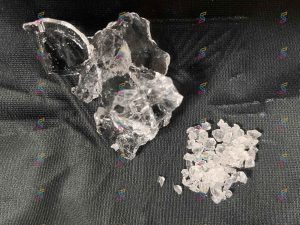What is Potassium Polyacrylate?
Potassium polyacrylate is a superabsorbent polymer (SAP) that can absorb and retain large amounts of water relative to its own mass. This remarkable property makes it widely useful in various applications, particularly in agriculture and horticulture, where it is used to improve soil water retention.

How to Make Potassium Polyacrylate?
The production of potassium polyacrylate typically involves the polymerization of acrylic acid (or its salts) in the presence of a crosslinking agent. Here’s a simplified version of the process:
- Monomer Preparation: Acrylic acid or potassium acrylate is the primary monomer.
- Polymerization: The monomer undergoes a polymerization reaction, often initiated by a catalyst such as a peroxide.
- Crosslinking: A crosslinking agent, such as N,N’-methylene bisacrylamide, is added to form a three-dimensional network, enhancing the polymer’s ability to absorb water.
- Neutralization: The acrylic acid is neutralized with potassium hydroxide to form potassium acrylate.
- Drying and Grinding: The resultant gel-like substance is dried and ground into a powder.
Biodegradability of Potassium Polyacrylate

Potassium polyacrylate is not considered biodegradable. The polymer’s strong, crosslinked structure makes it resistant to microbial breakdown. This persistence in the environment raises concerns about long-term ecological impacts, especially if it is used extensively in agricultural practices.
Safety of Potassium Polyacrylate
Potassium polyacrylate is generally regarded as safe when used appropriately. It is non-toxic to humans and animals in its polymeric form. However, as with any chemical, it should be handled with care to avoid inhalation of the dust or prolonged skin contact, which could cause irritation.
Toxicity of Potassium Polyacrylate
In its polymerized form, potassium polyacrylate is considered non-toxic. However, there are some points to consider:
- Inhalation: Fine particles of the polymer can be irritating to the respiratory system if inhaled.
- Environmental Impact: While not acutely toxic, its non-biodegradability means that it can accumulate in the environment, potentially impacting soil structure and aquatic ecosystems if not managed properly.
- Degradation Products: During decomposition, small amounts of acrylate monomers can be released, which are toxic. However, these are generally present in very low quantities.
Conclusion
Potassium polyacrylate is a highly effective superabsorbent polymer with significant benefits in water retention for agricultural and horticultural applications. While it is safe for human and animal contact in its intended use, its environmental impact due to non-biodegradability should be considered. Proper handling and disposal practices are essential to mitigate any potential adverse effects.
Understanding the properties, safety, and environmental impact of potassium polyacrylate is crucial for its responsible use. This ensures that its benefits can be harnessed without compromising ecological and human health.

